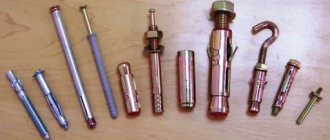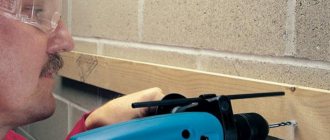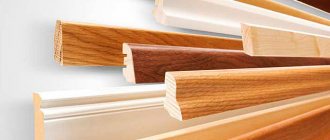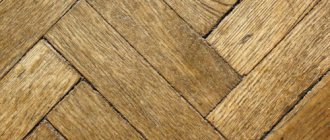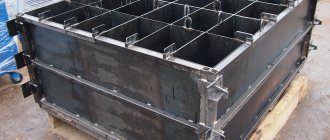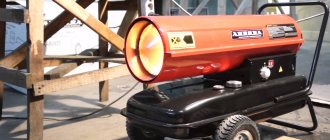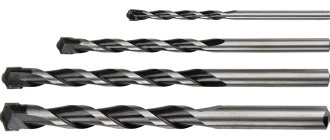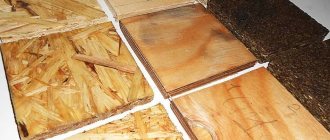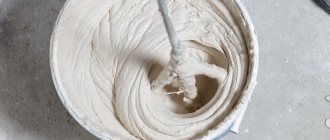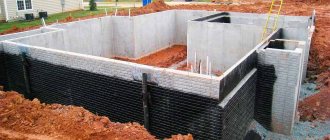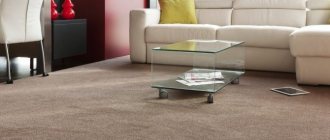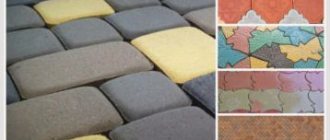Selection rules
Before purchasing dowel fasteners, you need to find out what surface it will be mounted on.
An important parameter when choosing is the diameter and length of the fastener. The larger they are, the greater the load it can withstand. It also takes into account the thickness, surface density and the presence of voids. For example, for a plinth, the most popular universal dowels with a diameter of 0.6 centimeters and a length of up to 8 centimeters are suitable. This is one of the reliable mounts, but if the structure needs to be dismantled, problems may arise. It must be remembered that before installation, all the necessary markings are applied for mounting on the wall and under the holes on the baseboard, which will later be drilled in advance. The diameter of the holes must be equal to the diameter of the dowel.
For a toilet with small dimensions, installation using dowels will be the most practical option. Rubber washers or gaskets should be included with the hardware. Here you also need to measure the surface and mark where the fasteners will be inserted. Next, a hole is drilled in the tile with a drill, and then in the concrete with a construction hammer. Façade specimens are suitable for insulation and polystyrene foam; at their base there is a special serrated groove, thanks to which the dowel-nail is securely attached to the base.
As a fastener for a TV, for a wall-mounted hallway, for hanging a kitchen, shelves and other furniture that will be installed in a vertical plane, it is better to use metal nails for aerated concrete or frame ones.
In the next video you will learn about the types, characteristics and features of installing dowel-nails.
Special screws for drywall
It’s worth highlighting self-tapping screws for plasterboard as a separate item, because many people have no idea how to hang something on a plasterboard wall so that it is secure.
So, there are special dowels for drywall, which have their own structure, thanks to which the dowel is screwed into the wall without drilling, thereby ensuring reliability.
There is also a dowel called the Molly, which is often found under the name Butterfly. When screwed into the wall, such a dowel expands in an interesting way, which increases reliability significantly.
Technical characteristics of the fastener
Most construction and finishing works cannot be done without the use of this part. It should also be noted that the dowel-nail is always supplied exclusively as a set, so you don’t have to look for and purchase a separate “frame” for the nail.
We would like to inform you that under no circumstances should screws replace nails; this replacement will be inappropriate, incorrect and impractical. A 6x40 mm dowel-nail, the characteristics of which are its advantages in comparison with similar types of fasteners, can be made of different materials (nylon, polypropylene, polyethylene).
The fastener in question consists of several parts, directly from a dowel (hence the name of this type of nail), double-spacer, on the surface of which there are no tangential fixing elements in the form of ailerons, or, for example, mustaches. The top of the part (later the head) can be of several shapes - cylinder, mushroom-shaped and secretive.
The second element of the 6x40 mm dowel-nail is, directly, a nail in the form of a screw. It is usually made of carbon steel, but this is not the only layer that is used to cover the screw. Among other things, a zinc layer is applied to the surface of the fastening element in question, which serves both for protection and performs a decorative function.
On the rod of the fastening element there is a smooth part, as well as a tip. It is immediately worth noting that the shape of the head of the element in question will ultimately depend on the shape of the inlet hole.
On the cut of this part there is a so-called slot, which serves as a necessary element for the possibility of replacing the nail itself if necessary.
Do not forget about the calculated maximum load that can be applied to a 6x40 mm dowel-nail (for different materials, this indicator will be different):
- If the fastening work is on concrete, then the maximum load value should not exceed 15 kg, including the shear itself - up to 12 kg.
- When working with bricks, the figure in question should be no higher than 12 kg; in this case, the maximum shear load does not change.
Size
Dowels, like any other fastening elements, have different sizes, because they can be used on different materials and under different conditions. Let's look at the dimensions of the fastener element in question:
- The length of a 6x40 mm dowel-nail is 40 mm (this is the second number in the name of the part in question);
- The length of the nail itself, which is screwed into the dowel, is 45 mm;
- The diameter of the dowel is equal to 6 mm (the first number in the name) and the same parameter of the nail is 4 mm;
- The thickness at different ends of the part is different, the minimum is 10, the maximum is 50;
- Anchoring depth - 30.
How to attach a dowel-nail?
Having understood the standard sizes and learned to use an impact drill and hammer drill, it is very easy to install structures using this fastener. The instructions on how to use a dowel-nail are simple:
- Mark the center of the hole.
- We use a puncher to punch a hole of the required diameter, taking into account the markings.
- The length of the hole should be 5-6 mm longer than the dowel used.
- It is advisable to clean the hole from dust with a vacuum cleaner.
- Carefully hammer in the dowel spacer cartridge with a hammer.
- We hammer in a nail, if necessary leaving 2-3 mm for attaching the suspension.
- When fixing brackets or strips, the dowel is inserted from above through the mounting hole in the product.
https://youtube.com/watch?v=Ci2PzqpoDwE%250D
Peculiarities
A dowel screw is a fastening for structures that has special antennae for fixing it to the surface. When spaced with a screw or screw, a frictional force arises, which holds the dowel in the structure and prevents it from turning. Dowels are made from various materials and can have different weights and sizes. Depending on the material used, self-tapping screws have their own characteristics. For example, products made of polypropylene cannot withstand low temperatures. They are not recommended for outdoor use. Nylon elements are universal. They can be used both when working outdoors and indoors.
The dowel may have a locking collar. The screw is made from nylon and is used for installation work outside. Its peculiarity lies in special stoppers. They prevent the screw from falling into the hole.
Self-tapping screws without a shoulder also have their own distinctive feature. The product is made from polyamide and has a through hole with longitudinal ribs and a non-expandable upper part. The structure of the product makes screwing in a screw much easier and increases the thrust force. The non-expandable top protects the surface from cracks due to its immobility.
It is also worth noting that such dowels are resistant to weather conditions. They can be used for street facade work. There are types of dowels for a construction gun. The products are practical, effective and reliably fix parts to the surface.
All fastening elements are produced in accordance with GOST. Some specifications are subject to change. These include weight, diameter, length, structure. But the basic norms must be strictly observed. Manufacturers strictly adhere to the following standards according to GOST:
- material of manufacture;
- min and max indicator of rod curvature;
- protection from a galvanized layer - galvanization is applied in compliance with the rules of galvanization and passivated technology (coating thickness - 6 microns);
- diameter of the washer and metal rod.
It is worth familiarizing yourself with the numerous types of products and their properties in more detail.
How to choose a dowel for a self-tapping screw
Dowel
– an auxiliary element for fasteners that ensures reliable adhesion of screws or self-tapping screws to the load-bearing base.
Dowels are made of plastic (polypropylene, polyethylene, nylon) and metal (iron, stainless steel, brass). The dowel can be roughly divided into two parts. Expansion (in the photo below is the left part of the dowel), it is responsible for the force of holding the screw in the material, and non-expansion (in the photo below is the right part of the dowel). The non-spacer part of the dowel is needed in order not to destroy the soft layer of materials. For example, you are installing a dowel into a plastered brick wall, if there is no non-expanding part, then when you tighten the screw around the dowel, the plaster will collapse. You hang a wall cabinet by the base through the chipboard, then the length of the spacer should be equal to the thickness of the chipboard plus the size of the plaster layer, it turns out to be about 30 mm.
The non-spacer part of the dowel can have a countersunk, cylindrical or round flange. The flange prevents the dowel from sinking into the hole of the material being fixed or into the wall. The use of dowels with a flange is convenient if the flange will not interfere.
When screwing the self-tapping screw, the spacer part of the dowel, which has an internal diameter much smaller than the diameter of the dowel, tries to move apart, but the wall material interferes and the plastic of the dowel is compacted under great pressure, connecting the self-tapping screw to the wall into one whole.
Varieties and sizes
Engineering does not stand still, and during the operation of nylon fastening rods, many types have been developed for various tasks and purposes. Let's look at the main options.
Ordinary. Its main area of use is interior work. It is used when working with brick (regular and ceramic), gypsum and other materials, in general, where the load on it is insignificant.
You can find dowels of the following specific types: facade, for scaffolding, for hollow bricks and many others.
The most common nylon dowels have the following parameters - 6x30, 6x40, 8x60, 8x40, 10x50, 6x60 mm. These sizes are considered standard; there are also extended ones.
Dowel-nail - characteristics
When preparing for construction work, you need to purchase a lot of consumables. Depending on the type and size, the mounting dowel-nail has different technical characteristics. Let's consider the main parameters of this fastener (minimum and maximum data) using the example of polypropylene products with a hidden side:
- The designation of dowel-nails
is from 6x40 to 10x100. - Do
- hole for dowel (from 6 to 10 mm). - L
– dowel length (from 40 to 100 mm). - Ds
– diameter of nails (from 4 to 7 mm). - Ls
– length of nails (from 42 to 102 mm). - T
– depth of the hole for the dowel-nail for through installation (from 50 to 150 mm). - H
– anchorage depth (from 30 to 50 mm). - Da
– thickness of the attached product (from 10 to 100 mm). - The magnitude of the pulling force (for B25 concrete)
is from 1.6 to 2.4 kN. - The magnitude of the shear force (for B25 concrete)
is from 1.8 to 4.1 kN. - Weight 100 pcs.
dowel-nails - from 3.3 to 15.32 kg.
What is better, a dowel-nail or a dowel-screw?
In both cases, we have products consisting of two elements - a spacer part and a rod (nail, screw). The main difference between a dowel-nail and a dowel-screw is the method of installation in a load-bearing surface. In the first case, you need to drive a nail, and in the version with a screw, the fasteners are screwed in with an electric tool or a screwdriver. Let's consider the advantages and disadvantages of each option.
Dowel nail:
- Installation is faster.
- Suitable for installation in any solid wall except drywall.
- Due to impact loads, the risk of destruction of the front surface increases.
Dowel screw:
- Installation takes longer.
- Dismantling is easy.
- The fastening is considered more reliable.
- Less risk of damage to the façade.
What is better, a dowel-nail or a self-tapping screw?
It is wrong to compare both types of fasteners; they are designed to work in different conditions. A dowel-nail is excellent for brick, concrete, and dense foam block. Screws are recommended for plastic, chipboard or wood. In a pliable material, when screwed in, internal threads are formed that keep the product from being pulled out. If you have to work with metal, durable types of plastic or wood, it is better to use self-tapping screws with a sharp tip or drill.
How to choose the right dowel
So, if you have decided on the choice of a self-tapping screw, which we wrote about in our other article, and have decided on the type of dowel to suit your needs, all you have to do is look at the table below and use the data to select your correct dowel.
It is also worth mentioning that there is no single standard for dowels and screws, so many manufacturers produce these products based on their own standards.
| Dowel selection table for the selected screw, hole size for the selected dowel | |||||
| Self-tapping screw | Dowel | Hole for dowel | |||
| Diameter, mm | Length, mm | Diameter, mm | Length, mm | Drill diameter, mm | Drilling depth, mm |
| 3 | 12, 16, 20, 25, 30, 35, 40 | 5 | 12, 16, 20, 25, 30, 35, 40 | 5 | 16, 20, 25, 30, 35, 40, 45 |
| 3,5 | 12, 16, 20, 25, 30, 35, 40, 45, 50 | 6 | 12, 16, 20, 25, 30, 35, 40, 45, 50 | 6 | 16, 20, 25, 30, 35, 40, 45, 50, 55 |
| 4 | 12, 16, 20, 25, 30, 35, 40, 45, 50, 60, 70 | 5 or 6 | 12, 16, 20, 25, 30, 35, 40, 45, 50, 60, 70 | 5 or 6 | 16, 20, 25, 30, 35, 40, 45, 50, 55, 65, 75 |
| 4,5 | 16, 20, 25, 30, 35, 40, 45, 50, 60, 70, 80 | 6 or 8 | 16, 20, 25, 30, 35, 40, 45, 50, 60, 70, 80 | 6 or 8 | 20, 25, 30, 35, 40, 45, 50, 55, 65, 75, 85 |
| 5 | 20, 25, 30, 35, 40, 45, 50, 60, 70, 80, 90, 100 | 6 or 8 | 16, 20, 25, 30, 35, 40, 45, 50, 60, 70, 80, 90, 100 | 6 or 8 | 20, 25, 30, 35, 40, 45, 50, 55, 65, 75, 85, 95, 105 |
| 6 | 40, 45, 50, 60, 70, 80, 90, 100, 120, 140, 160, 180, 200 | 8 or 10 | 40, 45, 50, 60, 70, 80, 90, 100, 120, 140, 160, 180, 200 | 8 or 10 | 45, 50, 55, 65, 75, 85, 95, 105, 130, 150, 170, 190, 220 |
| 8 | 40, 45, 50, 60, 70, 80, 90, 100, 120, 140, 160, 180, 200 | 10 or 12 or 14 | 40, 45, 50, 60, 70, 80, 90, 100, 120, 140, 160, 180, 200 | 10 or 12 or 14 | 45, 50, 55, 65, 75, 85, 95, 105, 130, 150, 170, 190, 220 |
| 10 | 40, 45, 50, 60, 70, 80, 90, 100, 120, 140, 160, 180, 200, 220, 240, 260 | 12 or 14 | 40, 45, 50, 60, 70, 80, 90, 100, 120, 140, 160, 180, 200, 220, 240, 260 | 12 or 14 | 45, 50, 55, 65, 75, 85, 95, 105, 130, 150, 170, 190, 220, 230, 260, 280 |
Photo of dowel-nails
Size range of types
According to standards, dowels are made with a diameter of 5, 6, 8, 10 mm. There are also not so common ones, for example 4 mm. The length varies from 20 to 150 mm. The size of the dowel-nail is selected according to the design parameters. For the symbol, two values are indicated in the marking, the first is the diameter, the second is the length. The most popular size range of fasteners is 4x20, 4x40 mm, 5x30, 5x40 mm, 6x30, 6x35, 6x40, 6x50, 6x52, 6x60 mm, 6x70 mm, 6x80 mm, 6x100 mm, 8x40, 8x50, 8x60, 8x80 mm, 8x1 00 mm, 10x50, 10x60, 10x80, 10x100 mm, 10x120 mm, 10x160 mm, 12x60, 12x70, 12x80 mm.
Dowel fasteners are divided into types.
- Umbrella (or facade). It features a large cap and length. Designed for fixing large layers of insulation. The nail can be made of steel or impact-resistant plastic.
- Chemical. Fastening occurs due to the adhesive capsule. There are chemical dowels of ampoule and injection types.
- KVT (or fasteners for aerated concrete). During installation, threads are cut, but the base material itself is not destroyed. Can withstand loads from 400 to 600 kilograms.
- Universal. Designed for both surfaces with voids and solid ones. When installing a nail, the sleeve “twists” and forms a kind of knot that provides reliable adhesion and fixation.
- Molly (or collapsible spring) dowel. It is made of steel and during installation “folds”, mounted in thin and hollow walls. People may also call it a butterfly dowel.
- Spacer. It has additional mounting lugs; it can be three-spacer, four-spacer or six-spacer. A threaded nail is driven in with a hammer.
- Frame. Its distinctive feature is the shape of the non-expanding part, it is elongated.
- Metal for concrete. For fastening it is best to use a special gun, but installation can be done manually. The holes must be prepared in advance.
It is worth noting that some models come complete with a washer for sealing.
Types of dowels
Before driving a dowel-nail into a concrete wall, you need to carefully study the designs and features of all existing fasteners in order to choose the only correct option. The most effective and popular are: spacer, chemical, facade, nail, butterfly, KVT, universal, GB, etc. Available without dowels.
Classic
This design consists of a plastic sleeve with notches along the entire length and antennae, as well as a special rod inserted into it, which guarantees the strength and reliability of the fastener. When the rod is driven into the sleeve, the plastic expands in the hole, ensuring high-quality fastening.
Self-tapping screw in concrete without dowel
The self-tapping dowel for concrete is made with a variable thread that is screwed directly into the monolith. First, as usual, a hole of a smaller diameter is drilled, then the dowel is tightened, during which the variable notch expands the cavity, and the thread secures the self-tapping screw.
The fasteners are distinguished by high load-bearing capacity, strength, and are very difficult to dismantle, and therefore belong to the type of stationary fasteners.
Spacer
This dowel is suitable for fastening rigid structures - usually made in the form of slate, driven into the monolith with a hammer. The fasteners may also be different (in the form of a cylinder or tubular shape), there may be 2-3 spacers, with spikes. The connection is strong, suitable for loose materials with voids.
Butterfly
This option is suitable when fastening with dowels and nails to a concrete wall that is very thin. The sleeve is attached to the hole, and its back side is folded during insertion, which securely fixes the dowel.
Universal
Universal metal dowels for concrete resemble spacer dowels. In hollow walls, during the process of screwing in the nail, the sleeve is wrapped into a knot, securing the fastener in a “butterfly” fashion. The same fastening can be used for a variety of types of monolith.
Regular fasteners are simply driven into the wall with a hammer or a special gun.
Facade
Used for installation of various thermal insulation structures. Similar to a spacer, but has a longer length and a larger cap. The rod and sleeve are made of impact-resistant materials.
Chemical
This type of fastener is different from all others. The structure contains a capsule with glue and a metal screw. Usually they use this one.
First, a capsule corresponding to its size is inserted into the hole, broken, an adhesive substance comes out of it, and a metal rod is inserted into it.
KVT
Relevant only for aerated concrete monoliths. It has a wide thread, which guarantees high-quality fastening in porous structures.
G.B.
Typically, such products are used when working with polystyrene concrete blocks. The sleeve is somewhat reminiscent of a spacer sleeve, but is made in the form of a spiral. The dowel is capable of withstanding heavy loads, so it can be used for fastening hoods, hanging cabinets, various types of shelves and household items with heavy weight, and equipment.
Mounting to various surfaces
Dowels are used to install cornices and ebbs. For work, take products with locking collars that prevent complete passage through the surface. Nail dowels are used when repairing baseboards and for fastening window frames before using polyurethane foam. When fixing the frame, it is necessary to take into account the ratio of the non-spacer and spacer parts. For drywall, it is better to use plastic or metal screws. In addition, such screws are excellent for quick installation. There is no need to pre-drill the wall. At the end of the products there is a drill and thread. To install the self-tapping screw, use a screwdriver that screws the dowel into the surface.
A “butterfly” or “molly” dowel is used for fastening into a plasterboard surface, since the self-tapping screw expands only in a complete void. Plastic and metal dowels are suitable for fastening into foam concrete. To fix large items with a large weight, dowels made of polyamide are chosen. They have a through hole and a top without spacers. Screwing in the screw is easy and quick. The thrust force increases. Due to this, the structure is able to withstand a lot of weight.
To install TVs and air conditioners, it is recommended to use standard dowels that come with the fasteners. The products are already designed for the weight of the device. The only nuance is the base of the material. If the equipment is mounted on a brick or concrete wall, then there will be no problems with fixation. To install chandeliers and sconces, it is better to use long screws with reinforced spacers. Corrugated dowels are able to withstand the weight of massive chandeliers when installed under suspended ceilings.
For heavier structures, dowel anchors are used. They are equipped with several parts - a threaded bushing and a spacer. The spacer is screwed into the bushing. The thrust force increases, resulting in a reliable and rigid fastening.
For repair and installation of pipes, it is better to use a dowel clamp, which has a special screw for fixation. It is also used for fastening wires.
During repair and installation work you cannot do without dowels. The choice of screws depends on the material of the product and the surface on which the structure will be attached. Each type of self-tapping screws has its own characteristics, weight and size. This article introduces the reader to the characteristics of screws and will help determine the choice of dowels for a particular material.
In the next video you will find types of dowels and their application.
Types and sizes
Another quite significant advantage of mounting dowels, which significantly affects demand, is a large assortment. There are many sizes of fasteners. This makes it possible to choose the one that is suitable for a specific type of installation.
The most popular sizes are (in mm):
- 10x130;
- 10x132;
- 10x150;
- 6x40;
- 6x60;
- 5x60;
- 8x80;
- 8x100.
For a certain type of installation, you need to choose a special size dowel. For example, if we are talking about attaching a structure to a concrete or brick base, you need to choose a product of large diameter and length.
Each dowel size, in addition to all of the above, is clearly stated in GOST. The document also specifies the operating and application rules for each type of product.
All mounting dowels are divided into two types: with thread and without thread.
Their main difference is the installation method. A dowel with a thread can be screwed into the hole using a screwdriver, but to install a threadless dowel you need a special tool called a gun.
Peculiarities
A dowel is a sleeve made of any material with ribs located on the outside of the product to securely fix and prevent rotation during operation.
The main distinguishing feature of a nylon dowel is its longer service life. It can last more than 10 times longer than polyethylene. They have been in use in European countries for more than half a century. They are made from a special material - polyamide, which does not age over time and does not shrink. These properties of this type of plastic allow you to use nylon dowels for many years without fear for their reliability.
Another feature is the fairly wide temperature range at which such fasteners can be used - it ranges from -40 to +80 degrees Celsius. It should be noted that it can be used at lower temperatures at your own peril and risk: deformation and rupture may occur, or the dowel will not completely fit into place. But, as practice has shown, it will still hold better than regular polyethylene.
Due to the high degree of strength and reliability, this type of fastener can withstand loads approximately 3 times higher than fastening rods made of simple plastic. The only negative compared to the others is the higher cost due to the fact that a higher quality type of plastic is used.
Nylon fasteners have another interesting feature: if you put them in water, they will sink, unlike their other plastic counterparts.
Polyamide or nylon
Nylon is a polymer material with a high nitrogen content. It differs from all others in its density, rigidity and hardness. Nylon dowels are wear-, vibration- and shock-resistant. Their only disadvantage is their hygroscopicity, so such dowels need to be installed in dry weather and stored in dry places.
Mungo nylon dowels have the following advantages:
- resistance to deformation;
- high level of impact strength;
- resistance to loads;
- Possibility of use at temperatures from -40 to +100 degrees.
Also, polyamide dowels do not burn, and they do not contain harmful halogens. This is one of the best options for modern connecting components, guaranteeing ease of use, as well as high quality indicators.
Some points worth knowing
This type of special fastener has long been used in a wide variety of works, where fastening becomes a necessary process, according to technology. Below are a few important points to consider:
The two main parts that make up the element are the nail and the dowel itself. Such a connection allows you to attach objects to materials such as concrete, brick, stone without destruction.
Other materials that are classified as solid and high-density can also be fastened. It is possible, among other things, to cite the types of appropriate fasteners suitable for installation processes, where fiberboard, chipboard, and plasterboard serve as the main materials for connecting to the bases.
As for the length, it varies, starting from 30 millimeters. The longest specimens reach 160 millimeters in length. This type of dowel-nail is used for thermal insulation. The wide pressing cap gave rise to the fact that sometimes such a dowel is called a disc dowel.
Where is the 6x40 dowel nail used?
The fastening parts in question are used everywhere and are considered universal nails. Their range of applications is quite wide; they can be used to attach various types of structural elements to materials such as stone, various types of brick, reinforced concrete, etc.
Experts do not recommend using dowel-nails for hollow-type materials and porous surfaces. A 6x40 dowel-nail, the technical characteristics of which will be discussed below, is driven in with a hammer, but before that, do not forget about the preliminary preparation of a special hole where the fastener in question will be inserted.
The high demand for the element in question is due to three criteria and, at the same time, the advantages of such a nail, namely: extremely simple design, low cost and practicality. Dowel-nails 6x40 are popular during the installation of support-type structures, because in this process you simply cannot do without them.
Types of dowel-nails
Depending on the conditions, builders have to use different tools. For example, attaching an object to a concrete or plasterboard wall has a significant difference
In some cases, the reinforced strength of the rod is important, in other places - thermal conductivity and moisture resistance. Even a simple-looking driven dowel-nail has several varieties, which differ not only in size and material, but also in the installation method
Common types of dowel nails:
- Dowel-nail for manual installation
. - Dowel-nail for a gun
- installation is carried out using an automatic device, which greatly speeds up the progress of work. It does not have a spacer part. The nail is made of the strongest steel (hardness 53-56 HRC, bending no more than 0.1 mm). - Acoustic dowel-nail
- in the manufacture of fasteners, not metal is used, but plastic and fiberglass, which prevents corrosion or the passage of cold. Consumables of this type are used for installation of thermal insulation, sound insulation, cable ducts, and decoration. - Dowel-nail “umbrella”
– has a wide head and a long body, used for fixing thermal insulation.
Plastic dowel nails
A cup made of synthetic material has a spacer and non-spacer surface. The plastic dowel-nail is equipped with a cuff that prevents the fastener from falling into the surface. The presence of toothed elements prevents the product from scrolling in the hole. We list the common types of plastic fasteners:
- Universal dowel
- used together with wood and chipboard screws, screw-screws, suitable for hollow and solid materials. - Expansion dowel S
- nylon fasteners have a double-sided expansion. The absence of a stop edge allows you to hide the dowel inside the plaster. - MS Expansion Dowel
– Suitable for use with standard bolts or threaded rods. - Dowels for aerated concrete GB
– the presence of spiral ribs allows for a very strong fit in soft materials. - Dowels for mounting TV/TVV steps
– have a good surface geometry to prevent creaking and vibration. TV brand fasteners have a small spacer for installation in a steel profile.
Metal dowel nails
The use of a steel spacer sleeve increases the cost of the estimate, but allows you to increase the design load. A metal dowel-nail for foam blocks, brick structures or concrete structures is installed in the same way as plastic fasteners. We list the advantages and disadvantages of this product:
- High load-bearing capacity.
- Metal does not stretch over time.
- The galvanized or stainless steel sleeve is resistant to corrosion.
- Large selection of fasteners.
- Easy installation.
- The cost of dowel-nails made of metal is higher.
- It must be taken into account that steel fasteners can create more stress, so it is better to place them further from the edge.
Types of dowels
Today there are many types of dowels for concrete, the list of which would take a very long time.
Therefore, we will highlight the most common ones:
- Conventional spacers;
- Butterfly;
- Universal;
- Dowels-nails;
- Facade (umbrellas);
- Chemical;
- KVT;
- G.B.
Now let's take a closer look at their features and purpose.
Conventional spacer fastener
Spacer
The expansion dowel for concrete walls allows for the installation of various rigid structures. This type of fastener may differ in the type of screw heads. Most often they are made “sunk” and for a Phillips screwdriver.
However, screws of large diameters are sometimes found with a hex head. As a rule, they have a slate-shaped thread, due to which the dowel is driven into the concrete with a hammer during installation.
In case of dismantling, before pulling the dowel out of the concrete wall, you just need to unscrew the screw. After this, the sleeve can be easily removed from the hole.
It must be said that the sleeves themselves may differ. They come in two or three spacers. They often have spikes and locking tabs that help securely lock the fastener into the hole.
The sizes of dowels for concrete can be very different. Therefore, you should choose depending on the type of structure that will be installed.
In the photo - “Butterfly” fastener
Butterfly
Used for hollow or thin-walled structures. The sleeve of such fastening is inserted into the through hole. After screwing in the screw, its reverse side folds, resulting in fixation.
Universal fastener
Universal
This fastener in solid walls is identical to the spacer fastener. In hollow walls, when a screw is screwed in, the sleeve is wrapped into a knot, resulting in fixation using the “Butterfly” principle. Thus, the same fastener can be used for different surfaces.
Dowel nail
Nail
This fastener is a metal dowel for concrete, designed for permanent fastening of various thin-sheet materials and profiles to concrete. It can be used for through fastening of a profile.
The “nail” is designed in such a way that it is fastened to the wall by hammering it in. As a rule, for installation, a gun is used to drive dowels into concrete, however, this procedure can also be performed with a hammer.
"Umbrella" with a metal rod
Facade
Facade fasteners can be classified as a separate group.
It is intended for installation of thermal insulation:
- Expanded polystyrene;
- Fiber boards;
- Mineral mats.
In essence, this is the same expansion dowel, but elongated and with an enlarged head. The sleeve itself is made of impact-resistant polypropylene, and the rod is made of glass fiber reinforced polyamide. Sometimes there are “umbrellas” with a metal rod. (See also the article Self-tapping screws for concrete: features.)
Chemical dowel
Chemical
Another unusual type of fastener is a chemical dowel for foam concrete.
It consists of two elements:
- Capsules with chemical composition;
- Metal screw.
The installation instructions for such a dowel are as follows:
- First of all, a hole of the required length is drilled in the foam concrete.
- Then a capsule with a chemical composition is inserted into the hole.
- Next, the screw is screwed in. In this case, the capsule breaks and the chemical composition penetrates into the pores of the foam concrete.
- After this, you need to wait until the substance hardens. Depending on the type of composition, this may take from several hours to a day.
KVT fasteners
KVT
KVT was created specifically for installation in aerated concrete. Its feature is a wide thread located on the outside of the sleeve. Thanks to it, reliable adhesion to the porous base material is obtained. (See also the article Grinding concrete: how to do it.)
When screwing the sleeve into aerated concrete, it does not destroy its structure, but cuts a thread in it. Depending on the type of material, the KVT dowel for lightweight concrete can withstand 400-600 kg.
GB fastener
G.B.
The GB fastener is a dowel for polystyrene concrete blocks. Essentially, it is a spacer sleeve with spiral blades.
Thanks to this design, the dowel for polystyrene concrete GB is able to withstand heavy loads, so it is used when installing wall cabinets, heating radiators, shelves for household appliances, etc.
